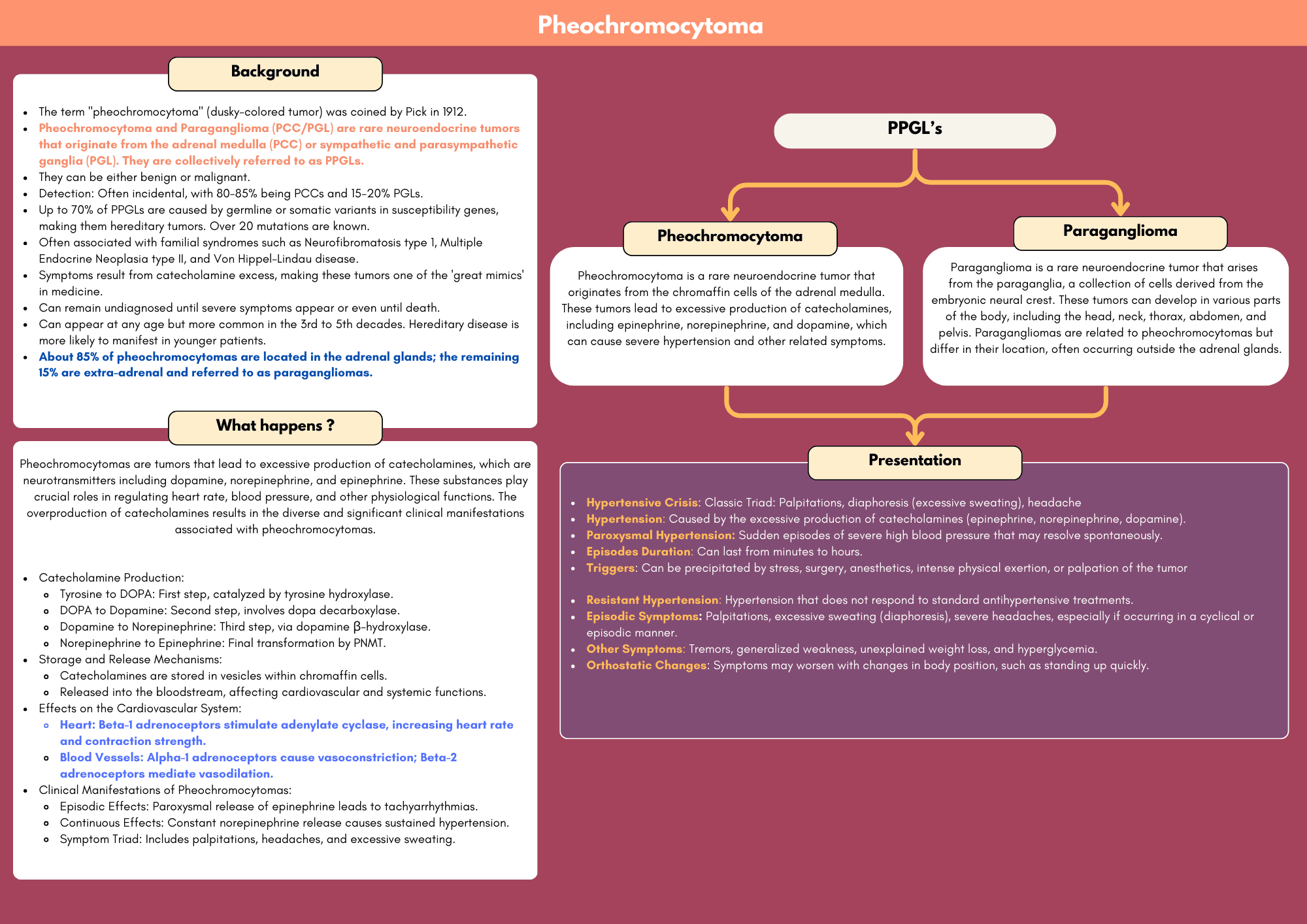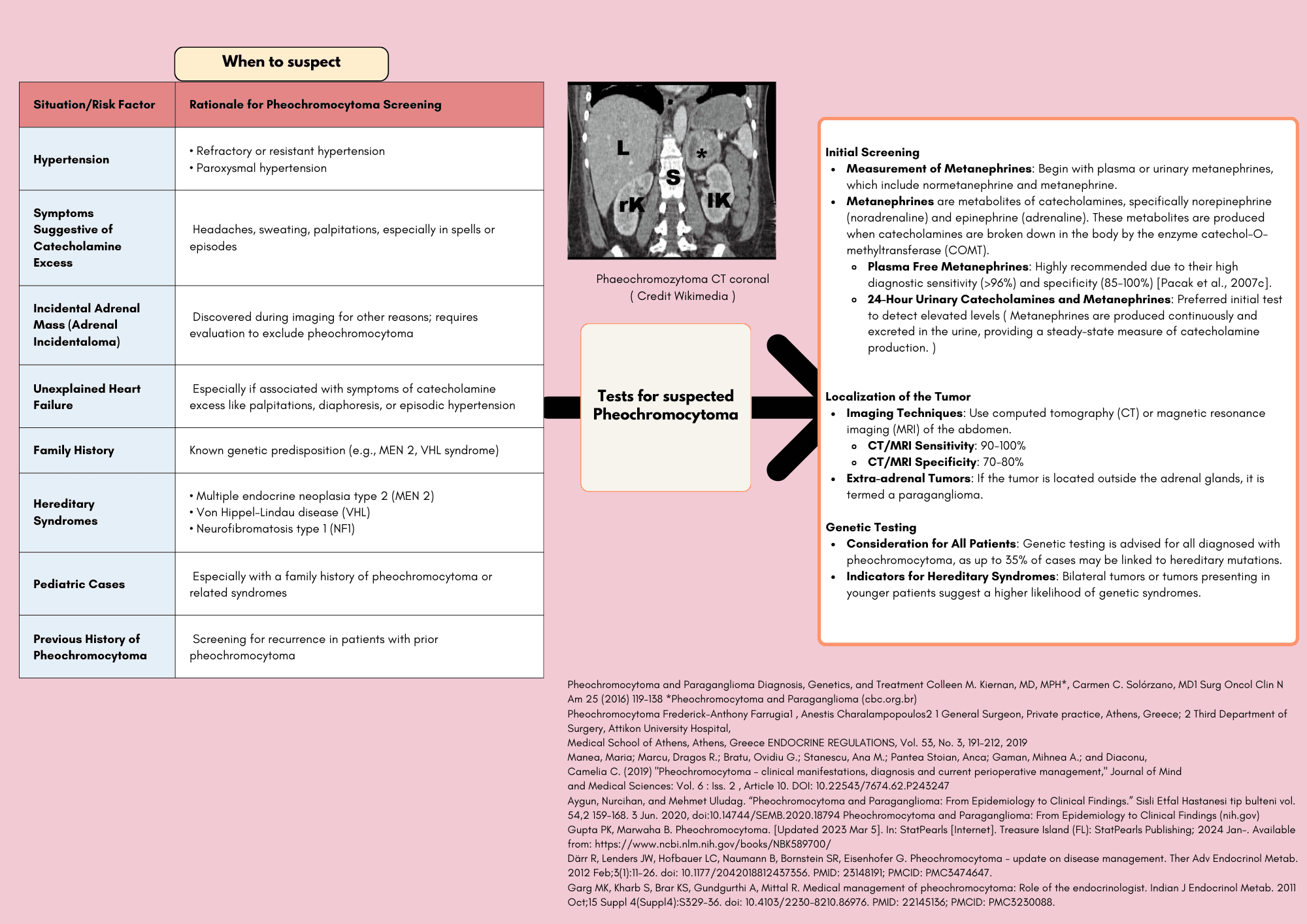Download A4Medicine Mobile App
Empower Your RCGP AKT Journey: Master the MCQs with Us!


Pheochromocytoma is a rare but critical condition that primary care clinicians should be equipped to recognize and manage appropriately. This neuroendocrine tumor, typically arising from the adrenal medulla, can cause a range of symptoms due to excess catecholamine secretion, leading to potentially life-threatening hypertensive crises. Early identification and referral are essential, as untreated pheochromocytoma can result in severe cardiovascular complications. While uncommon, occurring in only 0.1-0.6% of patients with hypertension, pheochromocytomas are important for primary care clinicians to recognize due to their potentially life-threatening complications and their curability when detected early.
Key features include episodic headaches, sweating, and palpitations, often accompanied by sustained or paroxysmal hypertension. For primary care clinicians, understanding the clinical presentation, appropriate diagnostic workup, and the need for timely referral to specialists is crucial in preventing adverse outcomes.The classic triad of symptoms includes episodic headaches, sweating, and tachycardia, often accompanied by hypertension. However, presentations can vary widely, from asymptomatic to mimicking various cardiovascular, neurological, or psychiatric conditions.
Pheochromocytoma and Paraganglioma Diagnosis, Genetics, and Treatment Colleen M. Kiernan, MD, MPH*, Carmen C. Solórzano, MD1 Surg Oncol Clin N Am 25 (2016) 119–138 *Pheochromocytoma and Paraganglioma (cbc.org.br)
Pheochromocytoma Frederick-Anthony Farrugia1 , Anestis Charalampopoulos2 1 General Surgeon, Private practice, Athens,...
Try our Free Plan to get the full article.